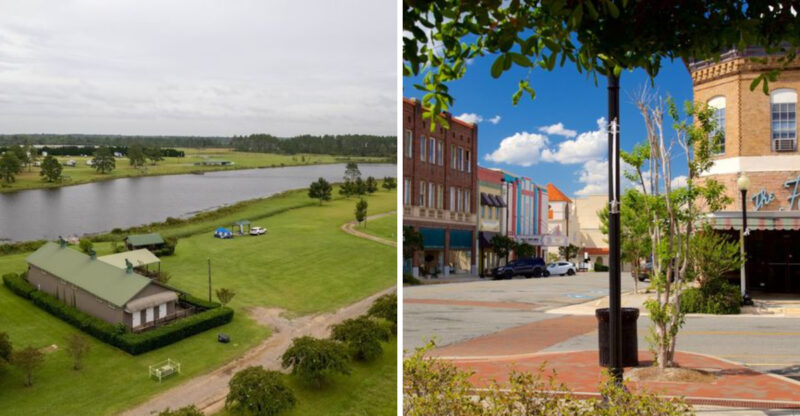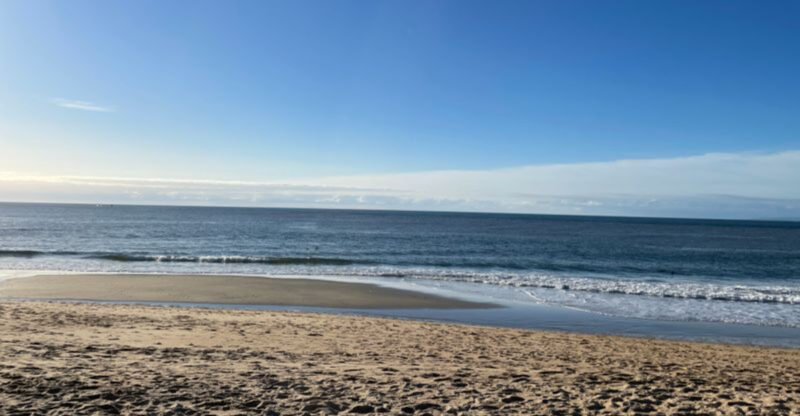13 Defunct Amusement Parks In Maryland That Once Sparked Endless Smiles

Maryland’s history is filled with magical places where families created lasting memories. Over the decades, numerous amusement parks opened their gates to excited visitors seeking thrills and entertainment.
Though many of these beloved destinations have closed, their stories continue to remind us of simpler times when wooden roller coasters and carousel rides brought pure joy to communities across the state.
1. Marshall Hall Amusement Park
If you lived near Washington, D.C., during the mid-20th century, chances are you took a steamboat ride to this riverside paradise. Marshall Hall sat gracefully along the Potomac River near Bryans Road, welcoming guests from the 1920s until 1980.
Families loved arriving by boat, which made the journey feel like an adventure before the fun even started. The park featured a thrilling wooden roller coaster, various carnival games, and picnic areas where people gathered for summer outings.
Its waterfront location made it especially popular during hot months when the breeze provided natural relief. Though the park closed decades ago, locals still share fond memories of dancing in the pavilion and watching the sunset over the river while munching on cotton candy.
2. Enchanted Forest
Opening its gates in 1955, this whimsical wonderland transported children straight into their favorite storybooks. Enchanted Forest in Ellicott City was designed around nursery rhymes and fairy tales, creating an immersive experience unlike any other park in the state.
Kids could climb through Cinderella’s castle, visit the crooked house, or meet characters from beloved stories. Each attraction sparked imagination and made little ones feel like they’d stepped into magical worlds they’d only read about at bedtime.
When the park closed in 1995, the community rallied to preserve its magic. Many iconic structures were carefully moved to Clark’s Elioak Farm, where new generations can still experience the enchantment that captivated Maryland families for four decades.
3. Glen Echo Amusement Park
Did you know this park began as a National Chautauqua Assembly site before transforming into one of Maryland’s premier entertainment destinations? Glen Echo opened in 1899 and quickly became a major recreational hub for the region.
The park’s stunning Spanish Ballroom hosted countless dances where couples swayed to big band music under glittering lights. Its beautifully painted carousel, with hand-carved horses, remains one of the most photographed attractions from that era.
Throughout its operation until 1968, Glen Echo offered families affordable entertainment close to home. Today, the site operates as a cultural arts center, preserving some original structures while honoring the joyful legacy of the amusement park that once stood there, bringing communities together through shared experiences and simple pleasures.
4. Six Flags America
It’s hard to imagine Maryland without this iconic destination, but Six Flags America closed its doors on November 2, 2025, ending over five decades of thrills. Located in Bowie, the park operated since 1974 under various names before joining the Six Flags family.
The Wild One wooden roller coaster stood as a testament to classic amusement park engineering, being one of the oldest operating coasters in the United States. Generations of families made annual pilgrimages here for summer adventures, creating traditions passed from parents to children.
Beyond roller coasters, the park featured water attractions, live entertainment, and special events that marked seasons throughout the year. Its recent closure marks the end of an era for Maryland’s amusement park landscape, leaving countless memories in its wake.
5. Jeepers!
When weather turned rainy or cold, families headed to this indoor paradise designed specifically for younger children. Jeepers! operated in Rockville from 1996 to 2007, offering climate-controlled fun year-round.
The facility featured age-appropriate rides, interactive play zones, arcade games, and dining options all under one roof. Parents appreciated having a safe, contained environment where kids under 12 could burn energy regardless of outdoor conditions.
Birthday parties at Jeepers! became a rite of passage for many Montgomery County children during the late 90s and early 2000s. The bright colors, upbeat music, and child-friendly atmosphere made it a go-to destination for family outings. Though it closed in 2007, many young adults today still remember their childhood celebrations and weekend adventures at this beloved indoor amusement center.
6. Gwynn Oak Amusement Park
Opening in 1893, this Baltimore-area park entertained visitors for nearly eight decades before closing in 1972. Gwynn Oak featured traditional amusement park attractions including roller coasters, a carousel, and various thrill rides that drew crowds from across the region.
The park holds significant historical importance beyond entertainment, as it became a focal point during the Civil Rights Movement. Protests in the early 1960s challenged its segregation policies, ultimately leading to integration in 1963.
Families enjoyed picnic groves, swimming pools, and live performances throughout the park’s operation. Financial difficulties and changing demographics eventually led to its closure. Today, the site is Gwynn Oak Park, a public space that preserves some original features while serving as a reminder of both joyful memories and important social progress in Maryland’s history.
7. Bay Shore Park
Located along the Chesapeake Bay, Bay Shore Park combined beach recreation with amusement park thrills from 1906 until the late 1940s. This dual-purpose destination attracted Baltimore residents seeking waterfront entertainment during summer months.
The park featured a pier extending into the bay, carnival rides, dance halls, and bathing facilities. Live bands performed regularly, creating a festive atmosphere where young couples courted and families celebrated special occasions together under the stars.
Transportation to Bay Shore included streetcars and ferry services, making it accessible despite being outside the city. Declining attendance after World War II, combined with maintenance costs and competition from newer attractions, led to its eventual closure. Though the amusement park no longer exists, the area remains a recreational space where echoes of laughter and music seem to linger in the bay breeze.
8. Electric Park
How did this park get its distinctive name? Electric Park in Baltimore earned its title from the thousands of electric lights that illuminated its attractions at night, a spectacular sight during the early 1900s when electricity was still relatively new.
Operating from 1896 to 1916, the park featured cutting-edge entertainment technology including electric-powered rides, illuminated fountains, and dazzling light displays. Evening visits were particularly popular, as the glowing park created a magical atmosphere unlike anything most people had experienced.
The venue also hosted vaudeville performances, concerts, and special events that drew diverse crowds. Financial troubles and changing entertainment preferences eventually forced its closure. Electric Park represented the exciting intersection of new technology and traditional amusement park fun, leaving a bright legacy in Baltimore’s entertainment history despite its relatively brief existence.
9. Riverview Beach Park
This Chesapeake Bay destination combined natural beach beauty with manufactured thrills from 1898 until 1929. Riverview Beach Park sat on the Patapsco River near Baltimore, offering convenient waterfront access for city dwellers.
The park featured a wooden roller coaster, carousel, bathhouses, and a large pier where visitors could fish or simply enjoy water views. Steamboats regularly transported guests from Baltimore, making the journey part of the overall experience.
Dance pavilions hosted popular bands, and picnic areas accommodated large family gatherings and company outings. A devastating fire in 1929 destroyed much of the park, leading to its permanent closure. Though Riverview Beach operated for just over three decades, it left lasting memories for those who experienced its unique blend of aquatic recreation and amusement park excitement along Maryland’s beautiful waterways.
10. Luna Park
Named after similar famous parks in New York and other cities, Baltimore’s Luna Park operated briefly but memorably from 1907 to 1915. The park attempted to bring Coney Island-style entertainment to Maryland with elaborate architecture and exciting attractions.
Ornate towers, dramatic lighting, and exotic theming created an otherworldly atmosphere designed to transport visitors to fantastical realms. The park featured numerous mechanical rides, live performances, and novelty attractions that pushed boundaries of early 20th-century entertainment.
Despite its ambitious vision and initial popularity, Luna Park struggled financially and couldn’t compete with established local destinations. Its closure after just eight years demonstrates how challenging the amusement park business could be, even with spectacular attractions. The park’s brief existence left a fascinating chapter in Baltimore’s entertainment history, showing how the city embraced national amusement trends during the Progressive Era.
11. Adventure World
Though this park eventually became Six Flags America, it deserves recognition for its earlier incarnation as Adventure World. Operating under that name from 1982 to 1999, the park emphasized safari themes and animal attractions alongside traditional rides.
The wildlife preserve allowed visitors to drive through areas where exotic animals roamed relatively freely, creating an African safari experience in Maryland. This unique combination of zoo and amusement park distinguished it from competitors throughout the 1980s and 90s.
Families appreciated the educational component mixed with entertainment, as children learned about wildlife conservation while enjoying roller coasters and water rides. When Six Flags purchased the property in 1999, they gradually phased out animal attractions in favor of more thrill rides. Adventure World’s approach represented a distinctive chapter in Maryland amusement park history, blending education with recreation in memorable ways.






